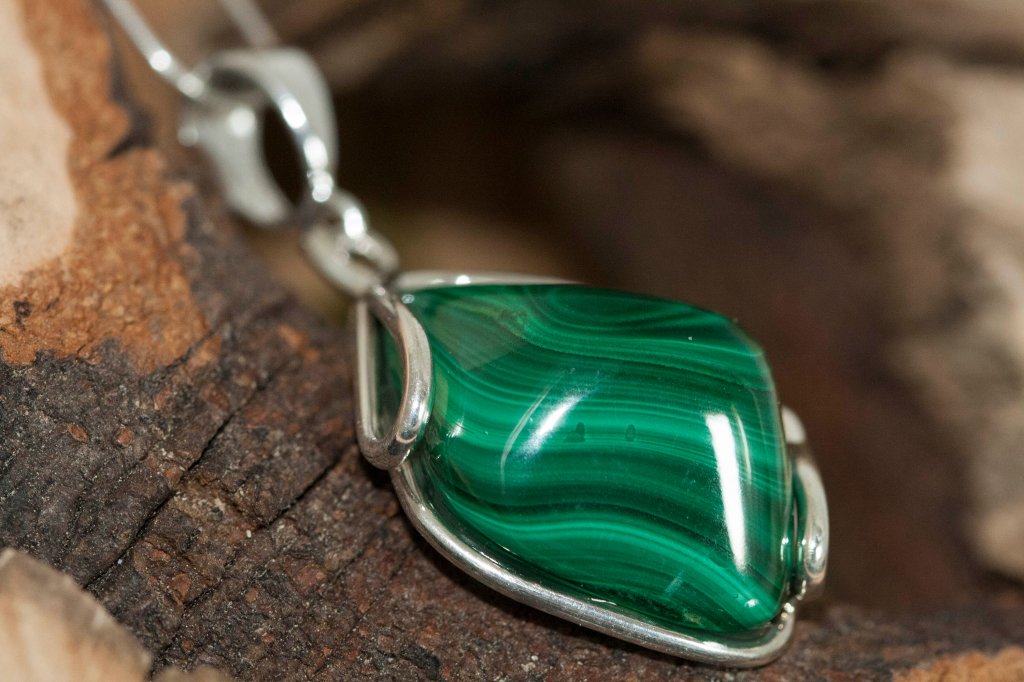Malachite, with its mesmerizing green hues and unique patterns, has been used for centuries in various forms of art and design. From architecture to jewelry, this beautiful stone has captivated the hearts of many. In this article, we will delve into the diverse applications and rich history of malachite.
One fascinating use of malachite is in architectural design and decor. Its vibrant green color adds a touch of luxury and sophistication to any space. Throughout history, malachite has been incorporated into palaces, temples, and other grand structures around the world. One notable example is the Malachite Room in the Winter Palace of St. Petersburg, Russia. This opulent room features walls covered entirely in malachite panels, creating a breathtaking visual display.
The allure of malachite extends beyond architecture; it also holds significance in the realm of jewelry. Many famous pieces throughout history have showcased this stunning gemstone. One such example is Queen Victoria’s Maltese Cross Brooch – an exquisite piece adorned with diamonds surrounding a large central malachite stone. Another iconic piece is Empress Josephine’s Malachite Tiara – a symbol of elegance and power during Napoleon Bonaparte’s reign.
In ancient mythology, malachite was associated with Venus or Aphrodite – goddesses known for their beauty and love-related attributes. It was believed that wearing or carrying malachite could enhance one’s attractiveness or promote harmonious relationships. This association with love and beauty continues to make malachite a popular choice for romantic gifts or tokens of affection.
Beyond its aesthetic appeal, malachite also holds significance in feng shui practices. Feng shui is an ancient Chinese practice that focuses on arranging objects within spaces to create positive energy flow. In feng shui philosophy, malachite represents growth, abundance, and healing energy when placed strategically within a home or workplace environment.
Interestingly enough, malachite has a long history of being used as a pigment for paints and dyes. Its vibrant green color was often ground into powder and mixed with binders to create pigments for artistic purposes. This tradition dates back centuries and can be seen in various historical artworks around the world.
Beyond its physical applications, malachite is also believed to have spiritual properties. It is associated with the heart chakra, which governs love, compassion, and emotional healing. Many individuals believe that wearing or meditating with malachite can help open up the heart chakra, allowing for greater emotional balance and healing.
One of the most intriguing aspects of malachite is its variation in color patterns. While it is primarily known for its striking green hues, this stone often exhibits unique banding or swirling patterns in different shades of green. Some specimens even feature hints of blue or brown within their designs. These variations make each piece of malachite truly one-of-a-kind and add to its allure.
In traditional African culture, malachite has been highly valued for centuries. It was commonly used in jewelry-making as well as other forms of adornment such as headdresses and amulets. The deep cultural significance attached to these pieces reflects the importance placed on malachite within African communities.
Similarly, Native American cultures also embraced malachite in their artwork and adornments. Native American tribes incorporated this stone into intricate beadwork designs and crafted stunning jewelry pieces using silver settings adorned with polished malachite cabochons.
Malachite’s beauty goes beyond aesthetics; it is also believed to possess protective qualities when used in talismans or amulets. Throughout history, people have worn these items made from malachite believing they could ward off negative energies or protect against evil spirits.
As society becomes more conscious about ethical sourcing practices, it’s important to consider how gemstones like malachite are obtained. Many companies now focus on fair trade practices, ensuring that the workers involved in mining and processing malachite are treated fairly and paid a living wage. Additionally, efforts are being made to promote sustainable mining practices to minimize harm to the environment.
In conclusion, malachite’s versatility and rich history make it an intriguing gemstone for both art enthusiasts and spiritual seekers alike. From its use in architectural design to its presence in jewelry throughout history, malachite continues to captivate with its vibrant green hues and unique patterns. Whether used as a symbol of love, protection, or healing energy, this beautiful stone is sure to leave a lasting impression on those who encounter it.
